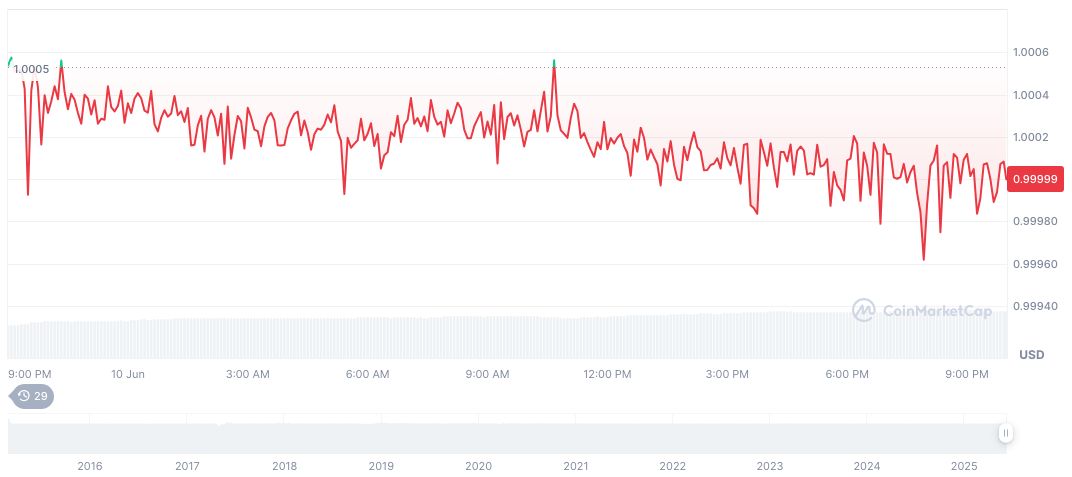Janet L. Yellen, U.S. Treasury Secretary, reiterated on June 12 that stablecoins could cement the dominance of the U.S. dollar. The statement underscores ongoing regulatory discussions aimed at ensuring stablecoins fall within the federal regulatory framework.
Yellen, known for her insights on economic policy, remarked that “current oversight is inconsistent and fragmented, with some stablecoins effectively falling outside the regulatory perimeter.”
Stablecoin Regulations Aim to Secure US Dollar’s Global Position
U.S. Treasury Secretary Janet Yellen emphasized the role of stablecoins in reinforcing the U.S. dollar’s global standing. She has argued for greater regulatory oversight to incorporate stablecoins into the existing financial regime. Yellen’s focus suggests intent to enhance dollar influence amid the digital currency era. Future implications could include tighter control of USDT and USDC, aligning them with traditional financial policies. These changes may impact USD-backed tokens, considered essential in digital finance landscapes. Regulatory modifications prompt debates within financial sectors, examining the balance between innovation and compliance.
Tether USDt currently trades at $1.00 with a market cap. USDT’s 24-hour trading volume is high, showing a -4.78% shift. Recent price adjustments reflect marginal changes, up 0.06% over 90 days, according to CoinMarketCap.
Insights from Coincu research suggest stricter regulation can alter financial equilibria. Stablecoin policies underscore systemic risk management, pushing for regulatory parity among financial products. This could stabilize markets, aligning digital currencies with traditional financial systems.
Market Effects of Stablecoin Regulation and Tether’s Current Standing
Did you know? Stablecoins, like USDT, have been pivotal since the TerraUSD crash, highlighting regulation’s impact on market stability.
Tether USDt currently trades at $1.00 with a market cap. USDT’s 24-hour trading volume is high, showing a -4.78% shift. Recent price adjustments reflect marginal changes, up 0.06% over 90 days, according to CoinMarketCap.

Insights from Coincu research suggest stricter regulation can alter financial equilibria. Stablecoin policies underscore systemic risk management, pushing for regulatory parity among financial products. This could stabilize markets, aligning digital currencies with traditional financial systems.




